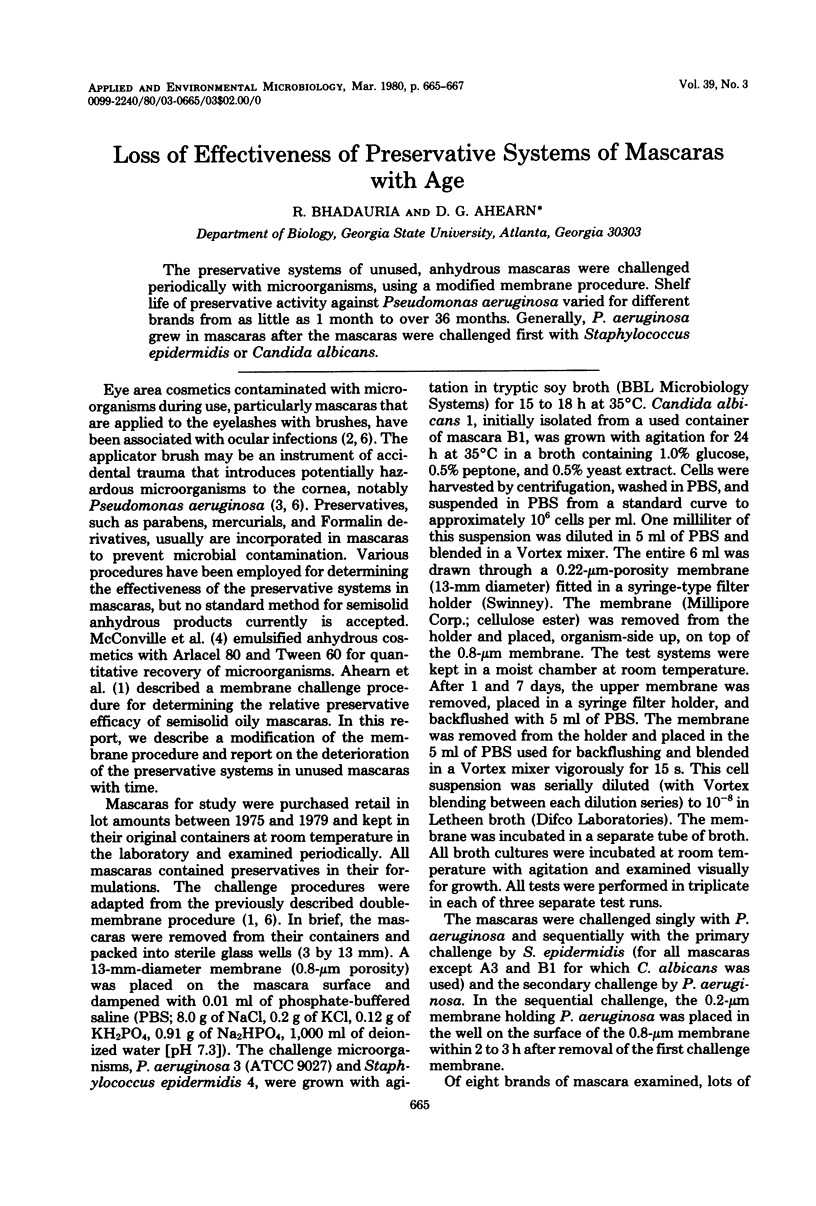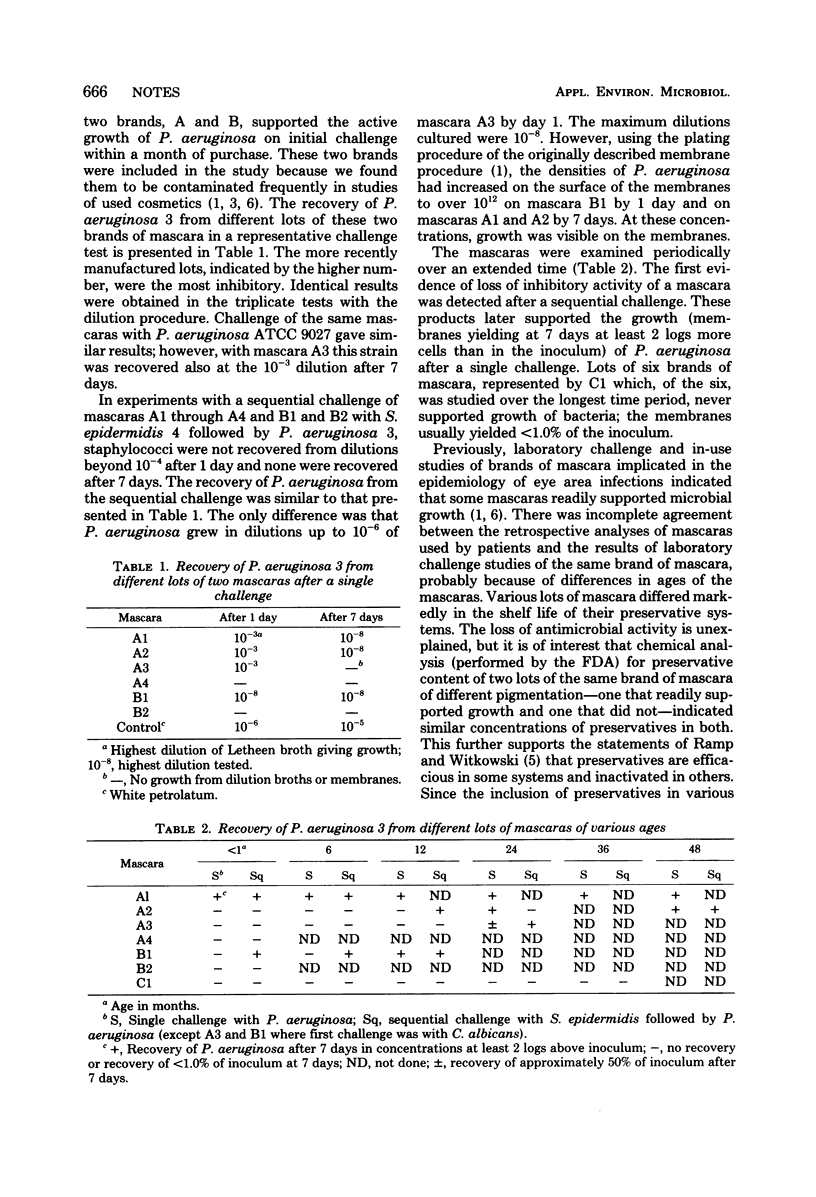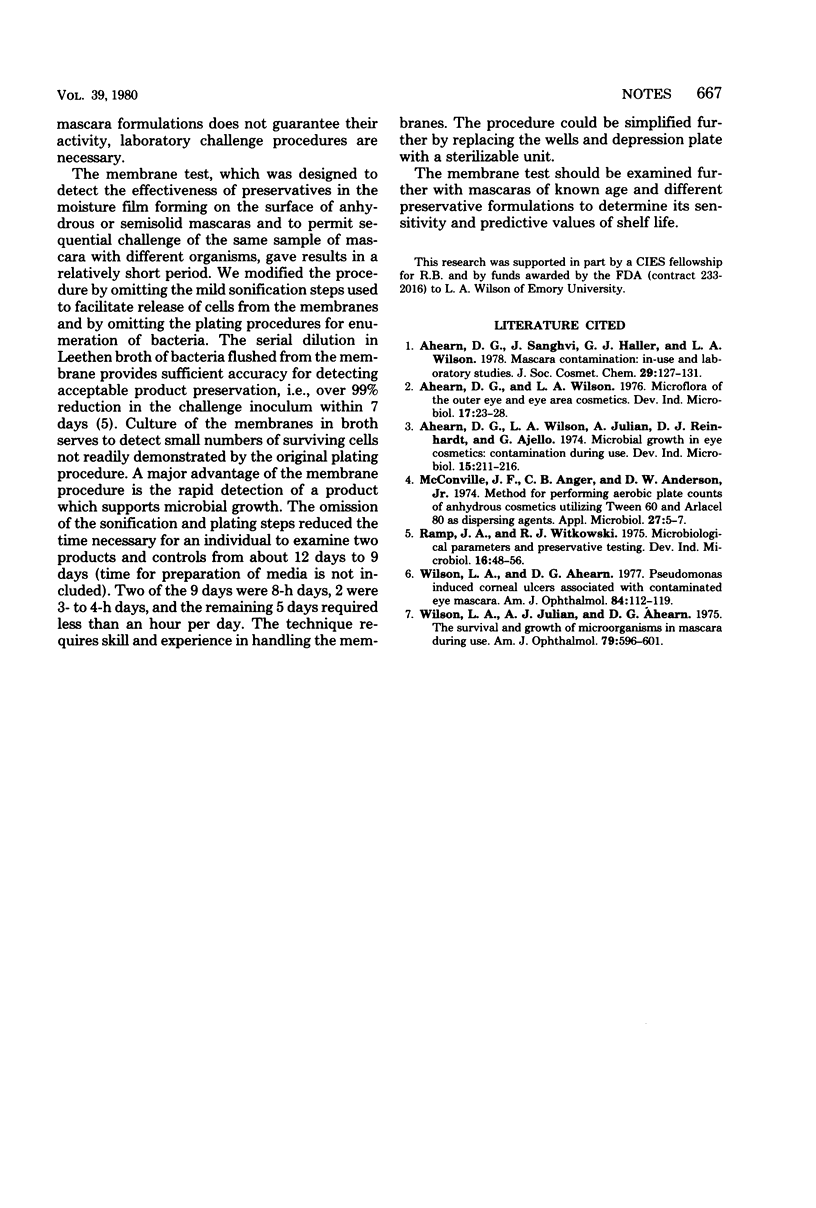Abstract
The preservative systems of unused, anhydrous mascaras were challenged periodically with microorganisms, using a modified membrane procedure. Shelf life of preservative activity against Pseudomonas aeruginosa varied for different brands from as little as 1 month to over 36 months. Generally, P. aeruginosa grew in mascaras after the mascaras were challenged first with Staphylococcus epidermidis or Candida albicans.
Full text
PDF


Selected References
These references are in PubMed. This may not be the complete list of references from this article.
- McConville J. F., Anger C. B., Anderson D. W., Jr Method for performing aerobic plate counts of anhydrous cosmetics utilizing Tween 60 and Arlacel 80 as dispersing agents. Appl Microbiol. 1974 Jan;27(1):5–7. doi: 10.1128/am.27.1.5-7.1974. [DOI] [PMC free article] [PubMed] [Google Scholar]
- Wilson L. A., Ahearn D. G. Pseudomonas-induced corneal ulcers associated with contaminated eye mascaras. Am J Ophthalmol. 1977 Jul;84(1):112–119. doi: 10.1016/0002-9394(77)90334-8. [DOI] [PubMed] [Google Scholar]
- Wilson L. A., Julian A. J., Ahearn D. G. The survival and growth of microorganisms in mascara during use. Am J Ophthalmol. 1975 Apr;79(4):596–601. doi: 10.1016/0002-9394(75)90798-9. [DOI] [PubMed] [Google Scholar]


